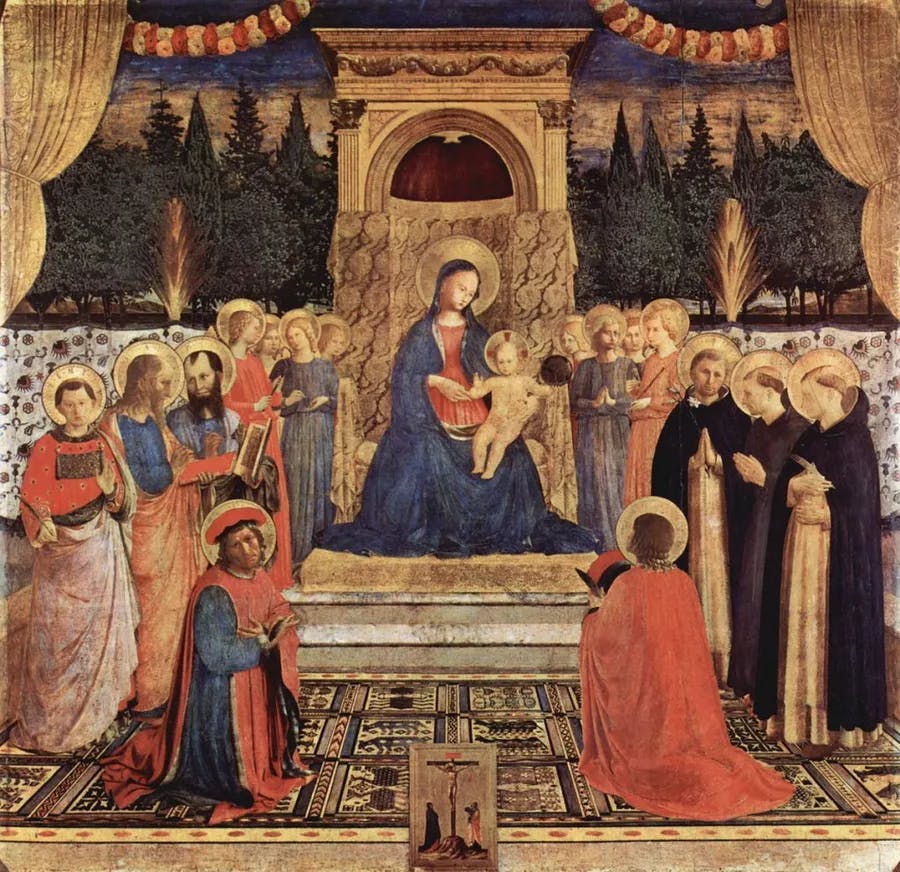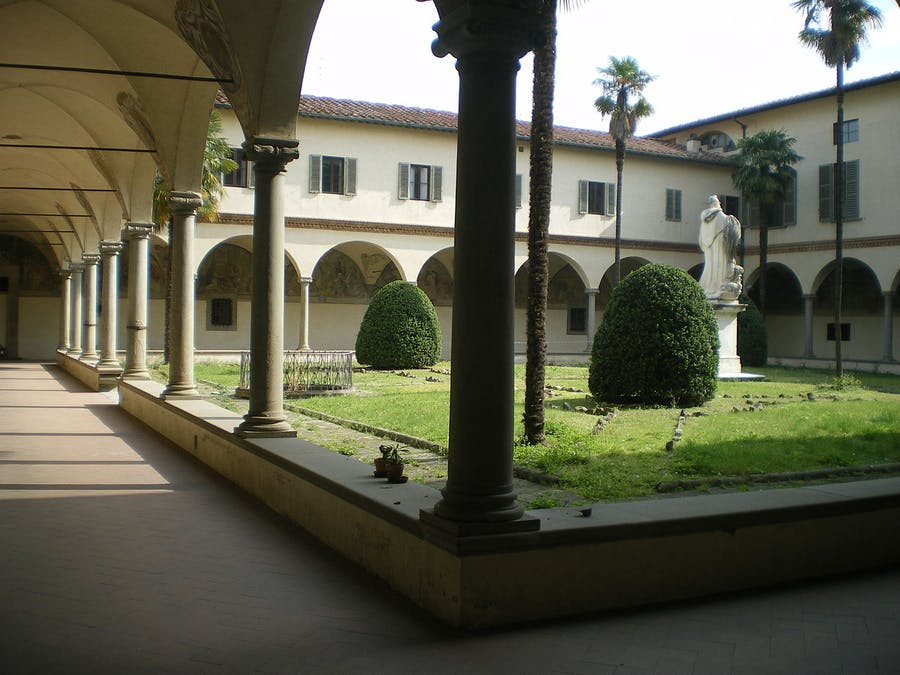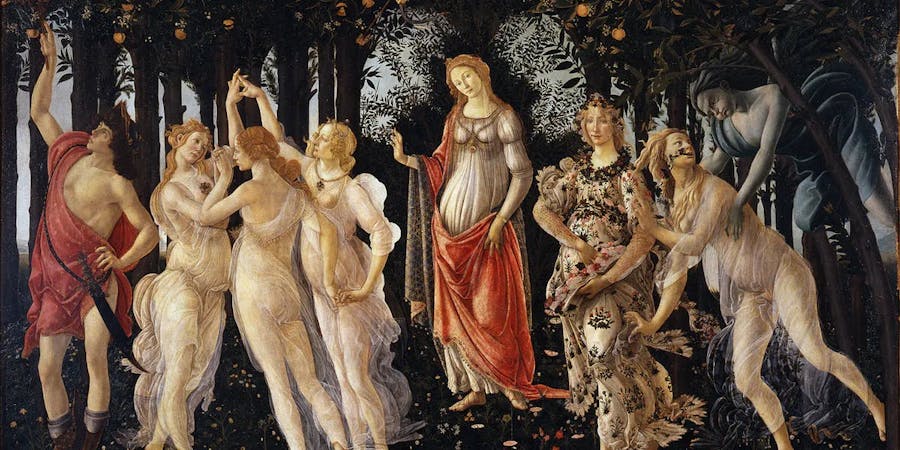What Major Family Influenced Artists in the Early Italian Renaissance
The Medici family unit was ane of the near of import dynasties in the history of the Italian Renaissance and the early modern age. The family unit reached a sure political and economic importance in the city of Florence as early on as the 13th century thanks to their success equally bankers and merchants. Cosimo de Medici (1389-1464) was the architect of the expansion of the power of the family, effectively establishing the existent domain of the Medici over Florence. This domination ignited the business organization of other important Florentine rival families, who, in 1433, exiled Cosimo and some family unit members to Venice. But the ties of the Medici with the Doge simply increased the power of their dynasty and the family returned triumphant to Florence the following year.
Through their prolific patronage of the arts, the Medici family expressed their ability and a changing artful, which incorporated classical and early on Renaissance roots while besides displaying current political and societal ideals.

Related: Michelangelo: From Homo to Genius
Among their nearly significant commissions is the San Marco Altarpiece, completed but a few years afterwards the Medici family returned to Florence, which displays a render to their quondam celebrity as well as an expression of religious values. The Virgin and child sit down on a throne in the center of the altarpiece, flanked on each side past angels, while Cosimo Medici's patron saints kneel in front end of the throne. The 1-point perspective leads directly to the Virgin's face, emphasizing worship and devotion. The inclusion of the Medici family patron saints in the painting aligns the Medici family with the Dominican order, which focused on education and the betterment of society, and controlled the San Marco Monastery.

Related: The 10 Most Famous Works of Art and Where to Notice Them
Cosimo Medici, as the major patron of the monastery, sought to institute influence within the church building, as well equally politically with his artistic contributions. The addition of the family patron saints conveys the Medici family'due south piety, connecting their power in Florence to divine favor and therefore legitimizing it. It also displays the grandeur of early on Renaissance altarpieces with the generous apply of gilded, rich color, and detail of a glorious scene.

The Palazzo Medici, begun in 1446 by Cosimo Medici, reflects a revival of more traditional, conservative architecture while too aligning the Medici dynasty with dominance in Florence. Wanting to construct a palace that was grand, yet also 1 of a regular denizen, Cosimo Medici chose Michelozzo to design his domicile. The final product appears as a synthesis of new and sometime pattern, with the first story constructed with rusticated rock and the college stories with more than delicate, smoothen masonry more than typical of the time. This style of architecture links the early on Renaissance and classical periods to create a new aesthetic wait that announced a Medici authority that was both progressive and rooted in tradition.
Related: Bronzino: An Ingenious Portraitist
Inside, the courtyard is classical in way with an arcade of pillars, aboriginal sculpture and reliefs. This renaissance of classical form connected the Medicis to a period of antiquarian power and a flourishing artistic era.

Related: The First Works of ten Famous Artists
David was one of the first revivals of classical sculpture past Donatello and was commissioned past Cosimo Medici's son, Piero de Medici, to brandish in their palace as a attestation to the time to come of their power and control over Florence. The completely nude delineation of David harkens to the classical emphasis of the perfect human torso, withal Donatello strays from defiant, god-similar depictions for this more youthful, humanist image. The presence of a David sculpture in the Medici habitation, created past the same sculptor equally the David in Florence's town hall, associates the family with the authority of the Florentine republic.

Primavera, a Medici commission in the late 15th century, embraces elements of classical mythology and conveys societal ideals for the honorable woman, as well every bit Florentine stability. The painting by Sandro Botticelli displays a naturalistic atmosphere with Venus in the center accompanied by other mythological figures such as Mercury, the Hours, Cupid, Flora, Clodis and Zephyrus, which correspond fertility and the patriarchy. This painting was commissioned during a relatively peaceful time in the Florentine democracy and expresses a pastoral, carefree scene that harkens to the flourishing of humanist thought.
The all-encompassing Medici patronage of the 15th century established them as Florence'due south reigning family and introduced a new classical artful stemming from humanism into the artistic culture of the era.
Discover more on Barnebys Mag
stackhousereemorted.blogspot.com
Source: https://www.barnebys.com/blog/how-the-medici-influenced-renaissance-florence
0 Response to "What Major Family Influenced Artists in the Early Italian Renaissance"
Post a Comment